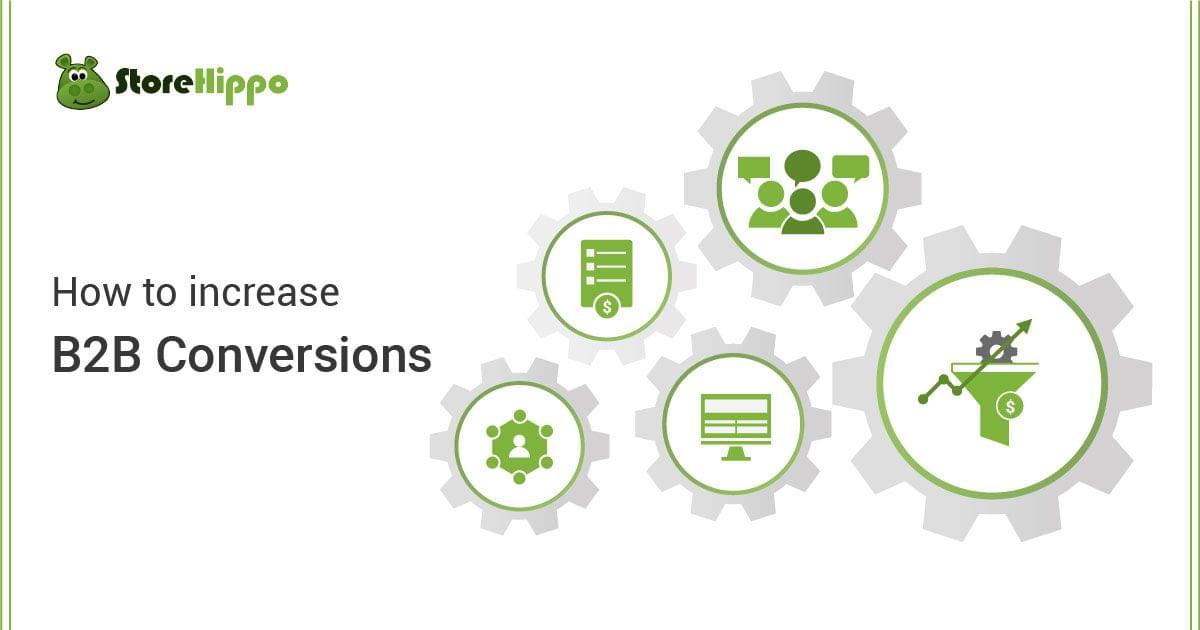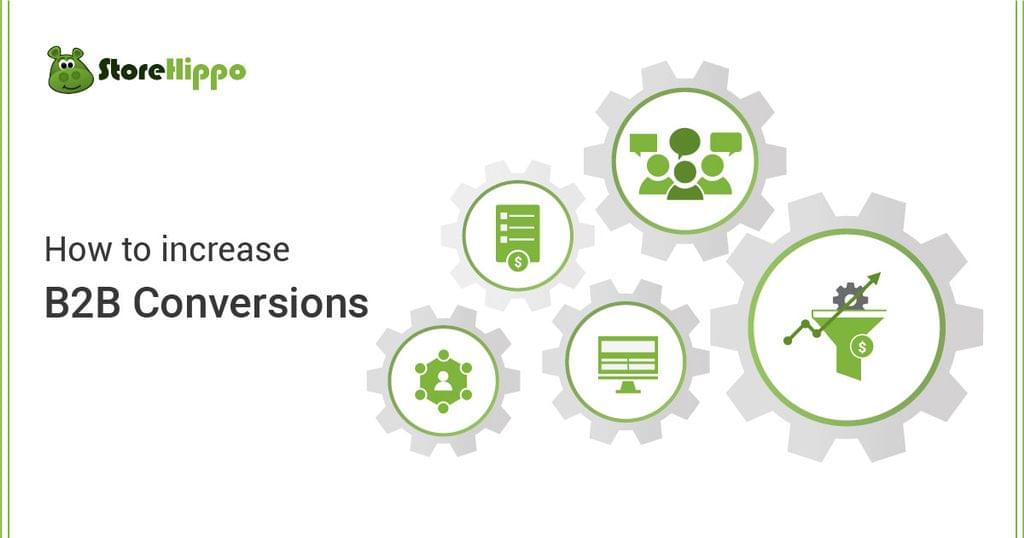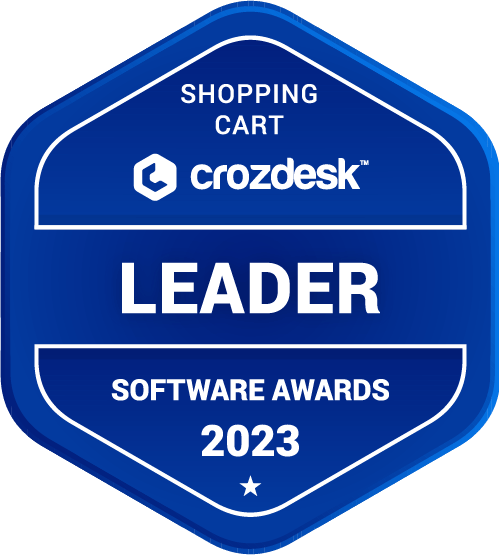As an entrepreneur, we believe your worries and responsibilities are always tied to the bottom line. And why shouldn’t it, since you worked hard to take your wholesale business online. But even after doing everything right, if your B2B business isn’t doing well, it’s bound to get under your nerves.
Your knee-jerk reaction would be to make some sweeping changes to your overall strategy. And oftentimes, in the heat of the moment, it seems like a brilliant idea to go about improving business. But the truth is, the majority of these times, little changes can be much more effective in making a big difference.
Understanding the ‘less is more’ strategy
When it comes to making some efficient moves to grow your ecommerce business, the ‘less is more’ strategy is really getting some buzz these days. Don’t know what that is?
It basically refers to making only small changes, but you will be doing so in the key business metrics. It means you will see maximum results when it comes to the overall growth of your wholesale business.
This strategy takes a very detailed approach and requires online wholesale businesses to look at making these little changes in each of the following key areas so as to maximize their ROI.
Table of Contents
1. Invest in your ‘About Us’ Page
No matter what you sell or who your B2B customers are, without trust, there is no sale. Every sale, every customer relationship that you see around are built on customer’s willingness to trust in your business and your ability to meet their needs.
Customers, especially Business to Business customers are more curious about you than you are of them. They want to know everything there is to know before doing business with your company. This includes certain things like who they are working with, what drives your business, what your goals are etc.
Now, where do potential customers generally look for that type of information?
Simple, on the ‘About Us’ Page of your ecommerce website. That’s why it is of utmost importance to devote your time and effort into creating a transparent and compelling ‘About Us’ Page.
So, what are you waiting for? Craft an irresistible story of your business, your mission, and your team. Below are a few must-haves for your ‘About Us’ Page.
- A clearly-defined mission statement
- An infographic sharing the story of your journey
- Showcasing the real people behind the scenes
- Your endorsements and reviews
- Your (up to date) contact information
- Clear, concise and easy to understand content
- And lastly, your trust badges
No matter who you are or what your B2B business sells, your first priority should always be to build trust and credibility through your website.
2. Reduce Complexity
We all know how complex Business to Business commerce can be. From seeking assistance in finding the right products to the complicated purchase process to God knows what else.
So, what’s your getaway ticket?
Reduce the complexity, make things simple for your buyers.
However, it doesn’t mean you should think about eliminating the functionality that makes the buying process complex. Rather, what we are asking is to find a way to simplify it. Here are a few ways to do it.
- Offer customer support. We know your ecommerce site is working perfectly and you don’t expect any phone calls. But that’s not true. Especially with wholesale, where the purchase is complex.
- Having customer service reps ready to assist buyers and guide them over the phone or through live chat is a sure shot way to win them over. So, don’t wait. Put your contact details on top of every page thus making it easy for your buyers to reach out for help.
- Offer an easy path to complete the purchase. B2B typically requires additional checkout steps compared to B2C (such as creating an account etc.).
- Just remember that building a pleasurable checkout experience is about clearing away distractions, besides providing the information customers need to understand the process and of course, making it as easy as possible.
- Simplify a quote request. As is the case, business buyers frequently require a price quote before completing their order. But assembling it requires dialogue between a sales staff and the buyer.
However, by providing a flowchart on your ecommerce website (containing the list of questions your sales staff needs to be answered to build a quote) followed by a spreadsheet (listing the various possible choices for each step), you can build a quotation system online.
3. Make Products Easy to Find and Search
Website navigation is another important factor that needs to remain simple for business buyers. It helps them quickly and easily find the products they are looking for.
Unfortunately, many wholesalers make the site navigation way too complex. They usually fail to follow the best practices and load the navigation full of internal jargon. And because of this complexity, many B2B customers simply leave the site without checking out.
The thing is, website navigation has always been the most common way for visitors to arrive at products (typically accounting for more than half of product views). But despite holding such an important position, it is also one of the most commonly neglected factors.
But not anymore.
Let’s see what clear and easy site navigation looks like.
- Navigation usually incorporates the global navigation menu and should normally be present at the top of the web pages (or via a menu icon on mobile).
- Also, it should be delivered through a drop-down menu where the menu categories are scrolled over (or tapped on a mobile device).
- Major categories which are of interest to your ecommerce buyers should be presented through the navigation, including the product categories.
- Navigation should also include product subcategories along with filters and attributes so as to narrow down an assortment or content list to the most relevant section.
In simple words, make sure you have an internal search feature that will help make your products easily discoverable to the buyers looking for it.
4. Use (and Update) Buyer Personas
Buyer Personas basically represent the manifestation of the personality of the buyers so as to understand and serve their needs better. So when building a buyer persona, you need to start by researching the B2B customers you are interested in targeting.
Sounds exciting, right? So, let’s see how something as small as creating buyer personas will make a big difference to your b2b marketing strategy.
Picking buyer attributes- since the buyer persona is all about going deeper into the understanding of customers, we have included some important attributes to speed up the building process.
- Demographics (age, location, company, etc.)
- Career (how long worked in the industry?)
- Lifestyle (what are their work responsibilities and activities)
- Motivations (what drives their ecommerce business decisions) etc.
5. Research Buyers
The first step while researching your ideal buyer is to brainstorm which companies and industries your product or service would be a great fit for. Here, your company’s customer-facing teams can help, they generally have a lot of insights into your products’ potential customers.
Meanwhile, you can also research online about your buyers. Try LinkedIn, it provides an in-depth look at various companies and who runs them.
Another thing you can do is to conduct one-on-one interviews with people. Just use the attributes mentioned above to help you plan your interview questions.
Lastly, you can use a variety of online tools for data mining such as Google Analytics to learn what B2B customers are searching for when they find your website.
Once you are done with the research stage, the time has come to build the buyers’ personas.
Creating the buyer personas- after spending so much time gathering data, we believe you can now see patterns emerge of different buyer personalities. All you need now is to segment these buyers by industry and job positions and you are good to go.
These business buyer personas, in turn, help your sales team in multiple ways while closing a deal. They offer your sales team insights on the personality traits, buying motivation and a defined set of beliefs to use in their interactions with customers.
5. Optimize for Mobile Users
You already know why you should optimize for mobile users, no convincing there. There must be a reason why 3 out of every 4 Business to Business buyers use their mobile devices to research the products or their suppliers, placing orders or paying for them (source: Smartinsights).
What we will discuss here instead is, how to optimize your ecommerce website for mobile users (of course, taking smaller steps).
- Make your website not only lighter but also faster for mobile users. Create PWA websites that work as mobile apps and can be accessed on poor or internet connectivity
- Optimize your images for mobile by compressing them so they do not take up too much space. This will help the images load quickly, thus improving the overall user experience. Using mobile-optimized themes also help boost the speed of your business website.
- You can also consider removing Adobe Flash from your website. Why? Because it’s outdated, its performance is poor and is vulnerable in terms of security.
- Make the B2B checkout process flawless and intuitive. Remove all distractions, use security seals to earn trust, use clear CTA etc. You know the drill, right?
- Eliminate pop-ups. They only hamper the web experience on mobile devices. Besides, Google also hates and has started demoting websites with annoying and obstructing pop-ups.
As we can see, your business website when optimized for mobile users has immediate benefits. From improved search results to boosting your business, your website can work wonders for you, provided you allow it.
6. Ask your Clients for Input
At the end of the day, it all comes down to making things easier for your wholesale customers. And what better way to find out what they are looking for than simply by asking them?
As far as we know, this is the easiest way for you to get valuable information from your customers. This information you can further use for the betterment of your ecommerce business and your clientele.
Below are a few strategies to effectively ease out the whole “getting feedback” process.
- To begin with, before bombarding your customers with any feedback queries, it’s better to create survey forms by asking yourself what information you really need. The goal here is to avoid any tiresome questions that might make them give up the entire answering process.
- Next, you can make sure you are not only utilizing the positive feedback but negative ones as well so as to improve future service and customer relationships.
- You can also make yourself available for your B2B clients by making extra effort to understand their vision. Take out time for face-to-face interactions and your customers will be more than happy to share their experiences with you.
- You can even use online polls and survey tools to collect relevant data from your customers. Here, using incentives and promotions such as gift cards, cash backs etc. can assist you to attract clients into giving feedback.
Hearing what your clients want from you will help you keep a balanced outside-in perspective on your ecommerce business. Plus, seeking out customer input will also create buy-in from a group of early adopters.
7. Follow Up Proactively
As it turns out, the line between an effective follow-up strategy and being a nuisance to prospects is quite slim.
That’s why it is important to ensure that the client’s follow-up experience should be a pleasant one. That way they would willingly want to continue the business relationship with you. Let’s see how you can achieve this.
Be persistent but don’t pester them. That is, don’t blow up a B2B lead’s voicemail. You should have the patience to give them at least 48 hours to return the call. The best way to handle this is to create a follow-up schedule. It basically means you call them on specific dates and times.
And if they still don’t want to talk to you? Well then, send them a friendly email. This will at least leave the door open for future potential sales.
However, the best strategy has always been to make communication with someone within the first 10 minutes. This has oftentimes worked wonders in closing the deal.
While communicating, it’s best if you share your ecommerce success stories with them in the form of testimonials, case studies etc. These are some of the best ways to nurture your business leads.
Plus, hearing these success stories reveals the first-hand benefits of purchasing your products, thus having a positive impact on your follow-up conversions.
You are ready to grow
Oftentimes, in our hurry to achieve better results, we focus on making major changes to our business strategy. What we forget is that small, incremental changes are just as important and if applied effectively, they can have a surprisingly big impact on the bottom line of your B2B business.
Sometimes all it takes is a small adjustment or a simplification to see a big difference in revenue.
Take StoreHippo for example. Its feature-rich platform works nicely for small as well as large scale industries. StoreHippo gives you the tools to streamline your wholesale business, thus allowing you to focus on what you do best - selling.
All our features are custom-designed keeping the minute details of the B2B industry in mind. That is why, when you join hands with us, you need not worry about making small or big changes to your online store.
We already took care of that.
Book a free demo with us to learn more about our offerings!























Leave A Comment